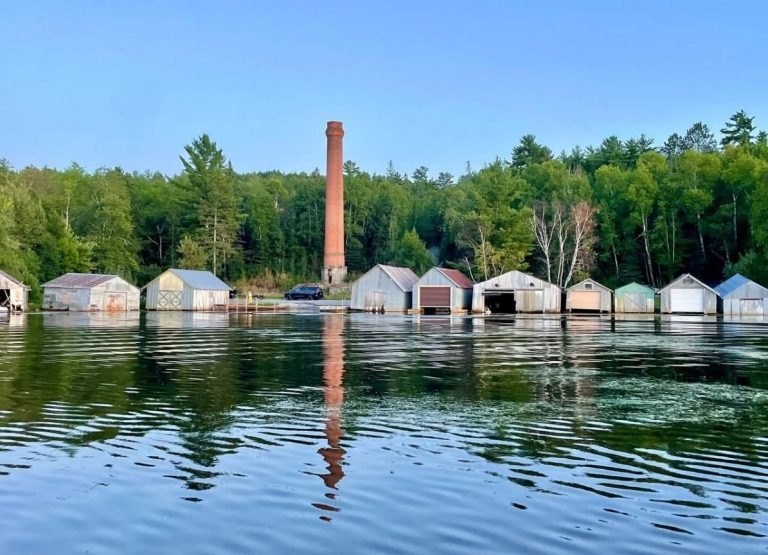The Story Behind Stuntz Bay

By P.Moraski/Tower
If you stand on the quiet shoreline of Stuntz Bay in Soudan, Minnesota, it’s easy to get lost in the view—rows of weathered boathouses hugging the water, their tin roofs glinting in the sun, the gentle lap
of Lake Vermilion against the shore. But behind the beauty is a story that stretches back more than 150
years, to a man named George Stuntz. In 1865, Stuntz wasn’t here for the scenery. A government land surveyor from Superior, Wisconsin, he came to the Vermilion Range with maps, a compass, and a
knack for spotting opportunity. While traveling through the area, he came across something that would
change the region forever—iron ore. Of course, the Ojibwe who lived here had long known of the rich
red rock, but Stuntz’s find would be the spark that set off a rush of investment and industry. He carried
a sample to George C. Stone in Duluth, a man with connections and ambition. Stone took it to Edward Breitung, a wealthy investor, and soon the gears were turning. By the 1880s, mining was in full swing at
the newly opened Soudan Mine, and the quiet shoreline of Lake Vermilion began to bustle with life. The
bay where Stuntz first made his mark would carry his name from then on—Stuntz Bay—a small tribute
to the man whose discovery helped shape the Iron Range. Today, the bay tells another chapter of the
story. Lining its edge is the historic boathouse district, about 140 rustic structures built by miners and
their families. They’re patched together from tamarack logs and sheets of corrugated metal salvaged
from the mine—proof that the people here knew how to make use of what they had. Once they stored
fishing boats and canoes for long summer days on the lake; now they stand as silent reminders of a
time when work and leisure were both tied to the water. So when you hear the name Stuntz Bay, you’re
not just hearing a label on a map—you’re hearing the echo of a man’s footsteps in 1865, the clang of
pickaxes in the Soudan Mine, and the laughter of families along Lake Vermilion. It’s a place where
history and the present sit side by side, just like the boathouses and the shoreline.


